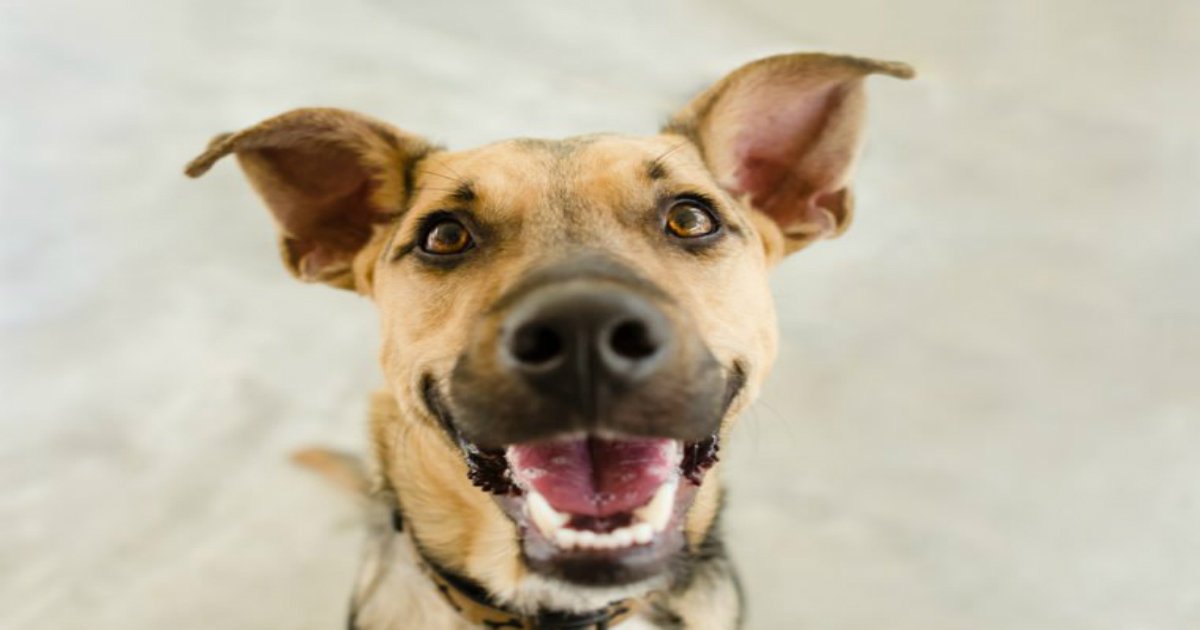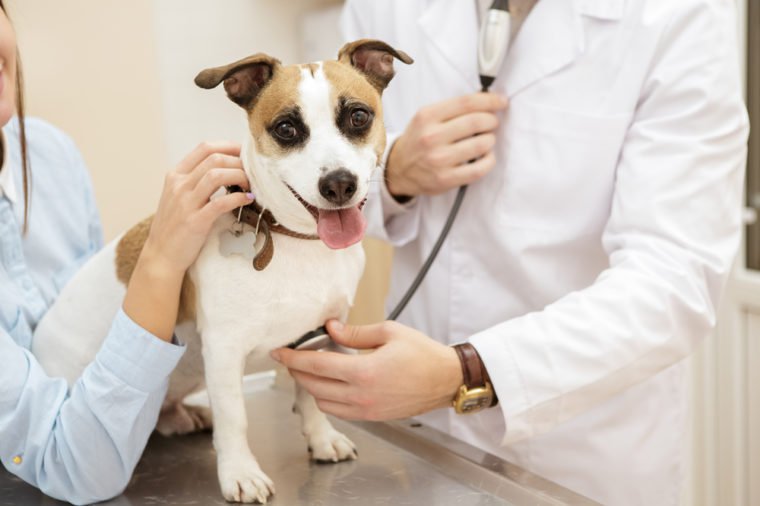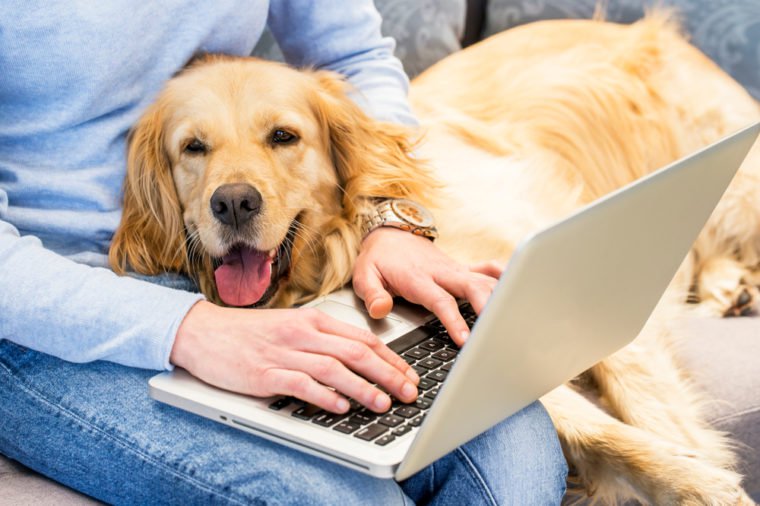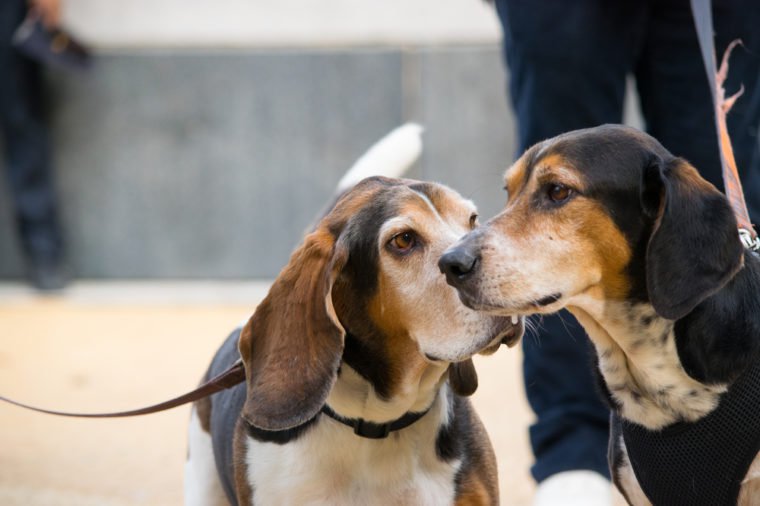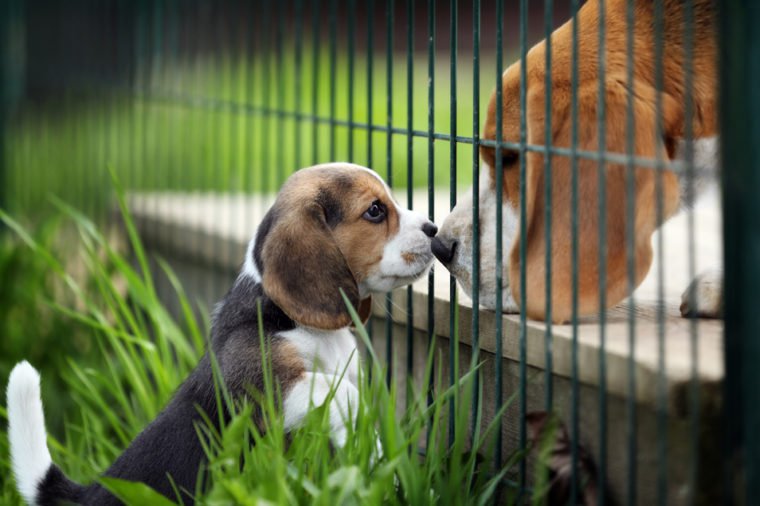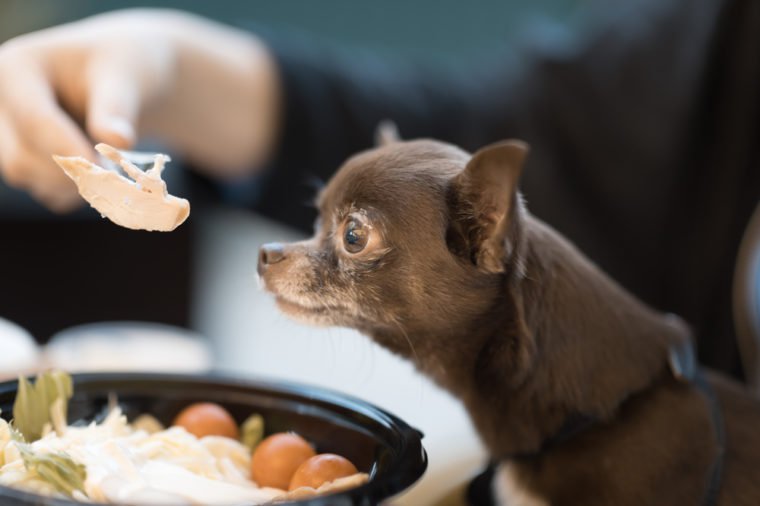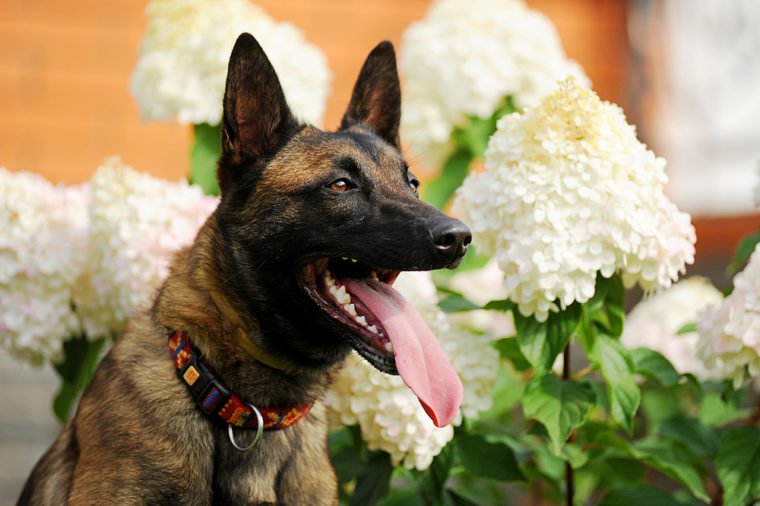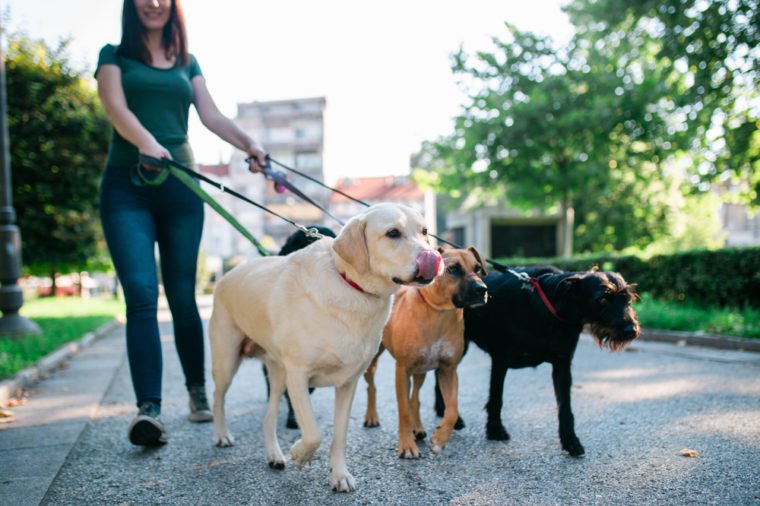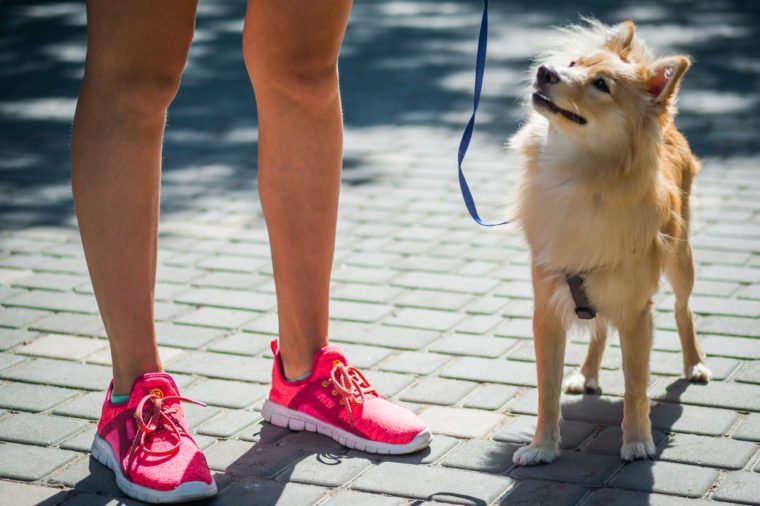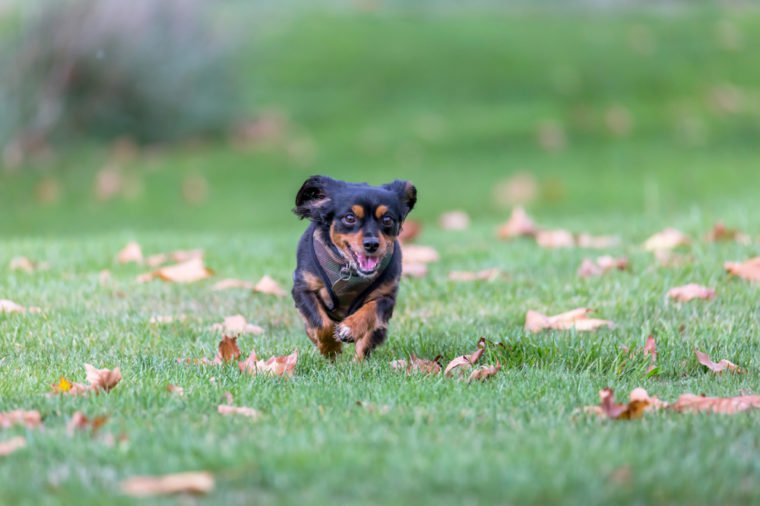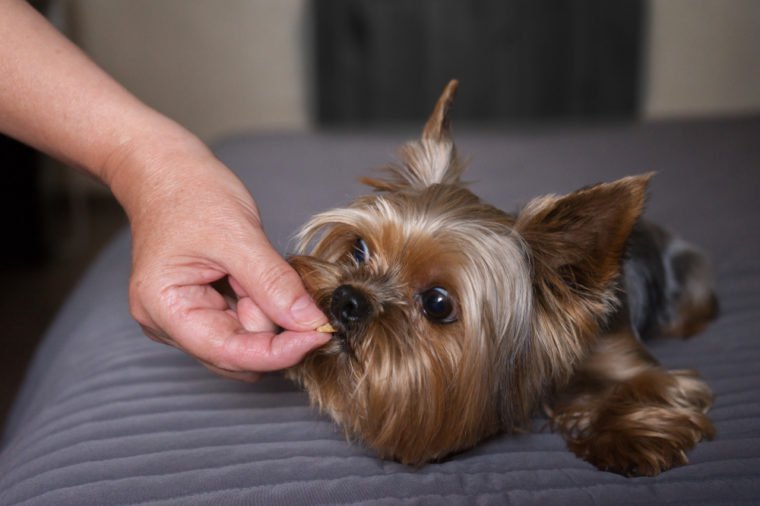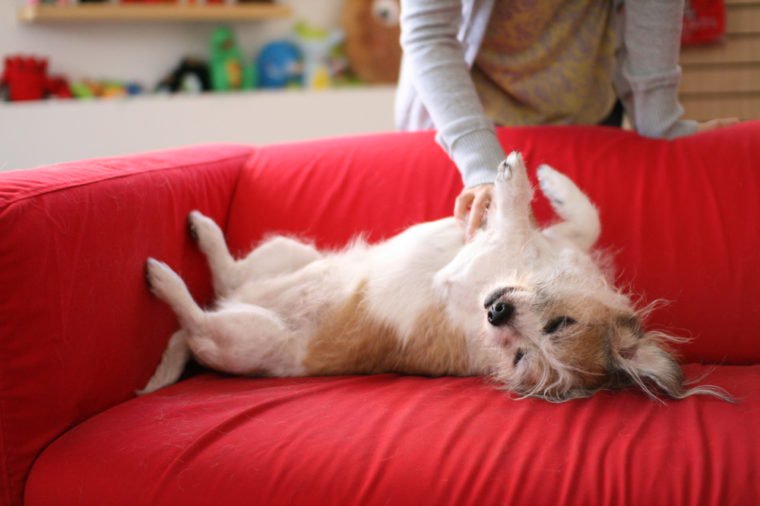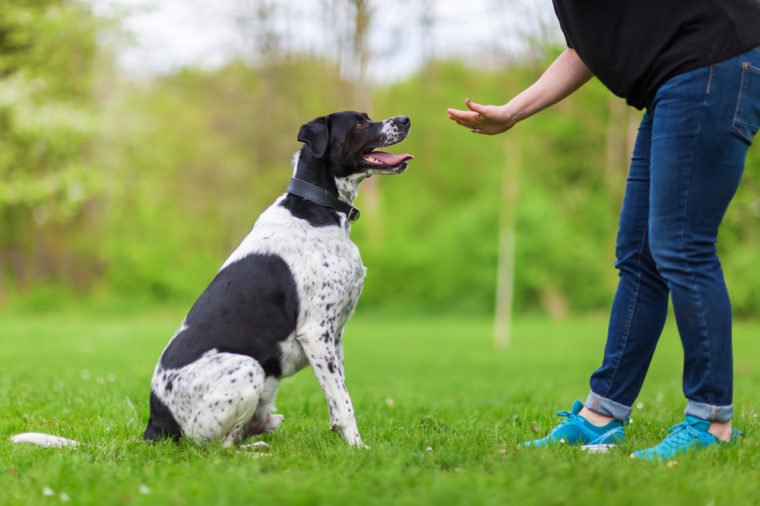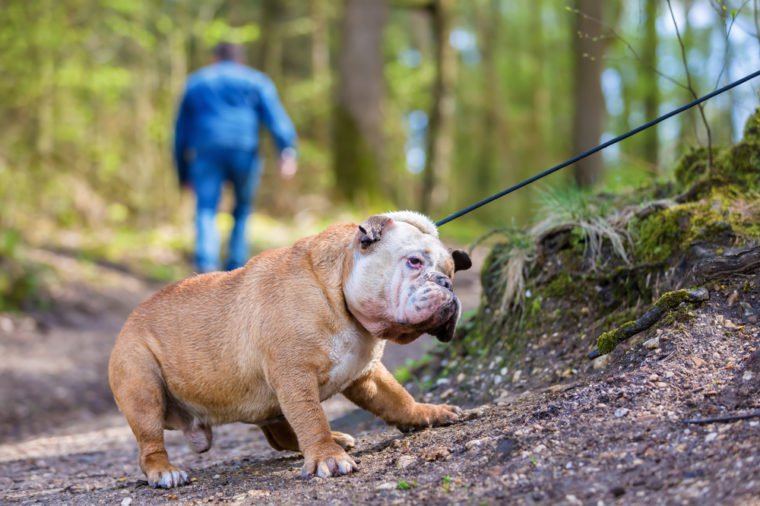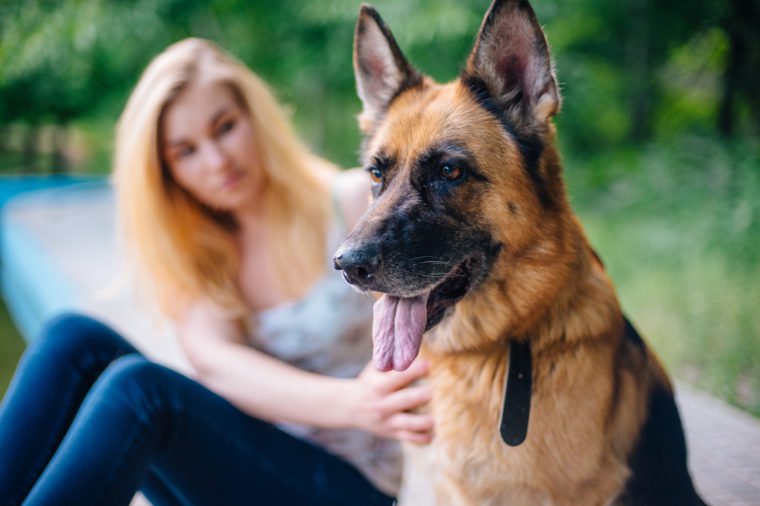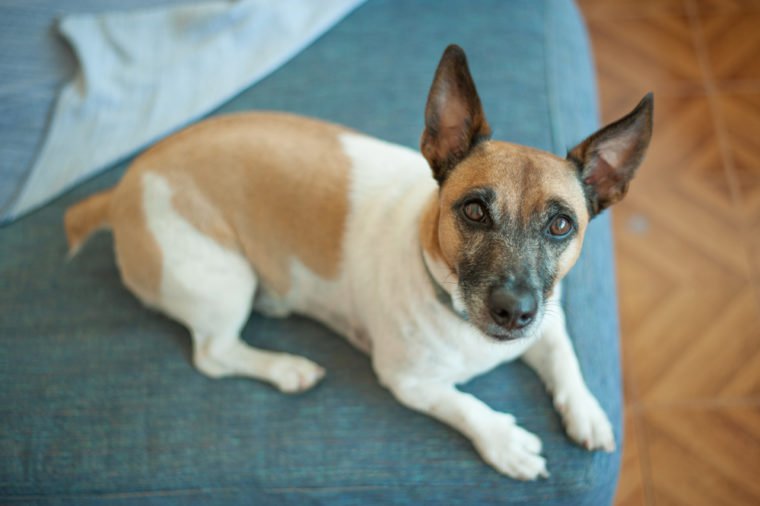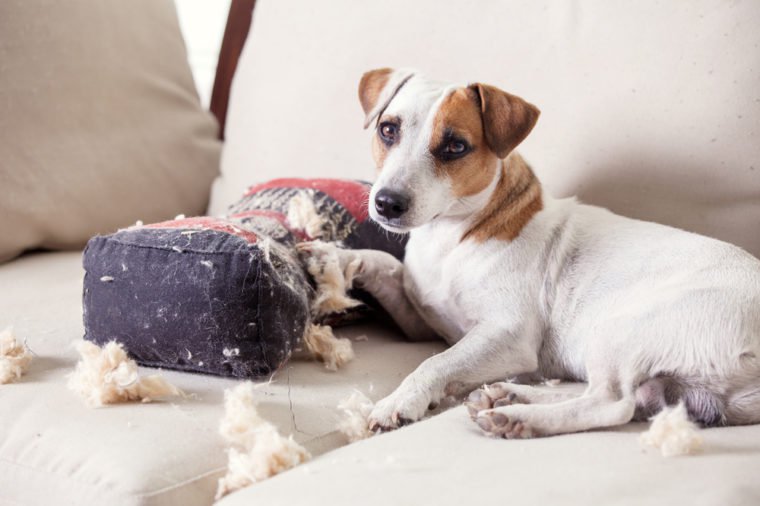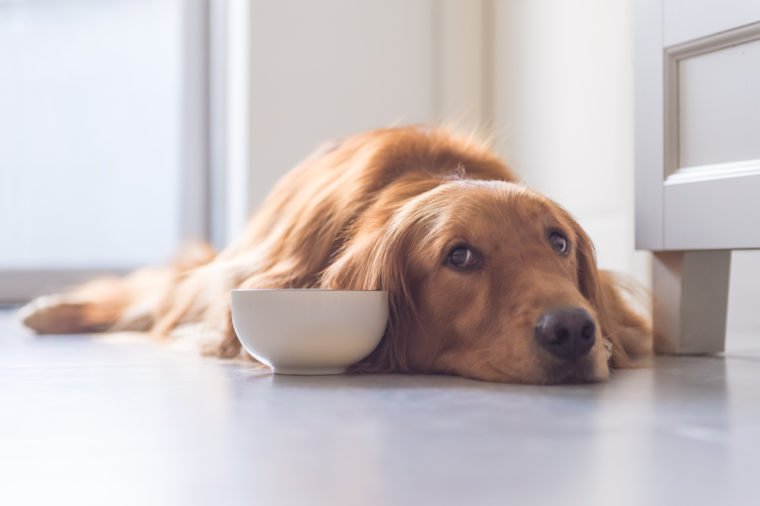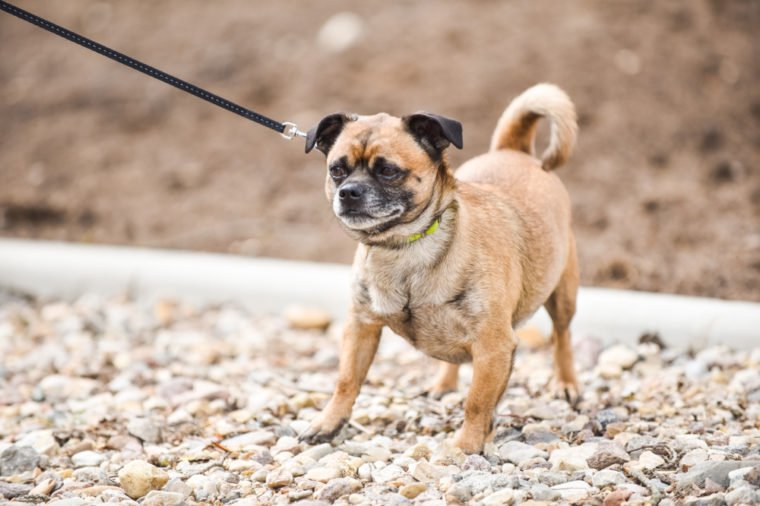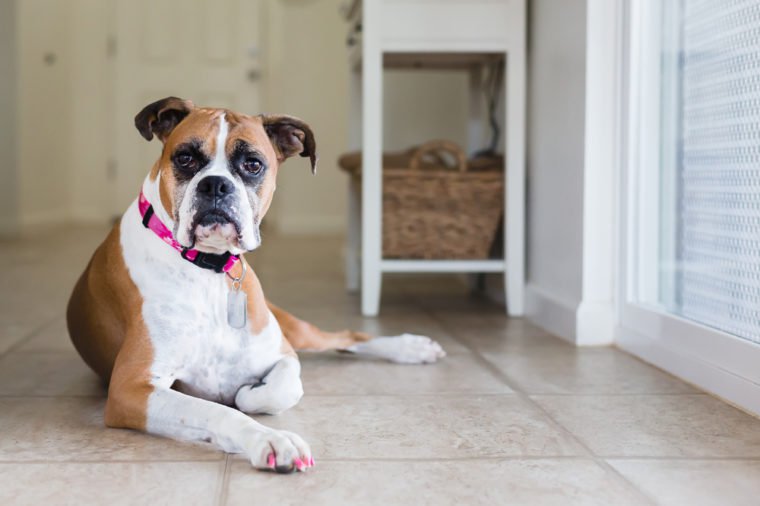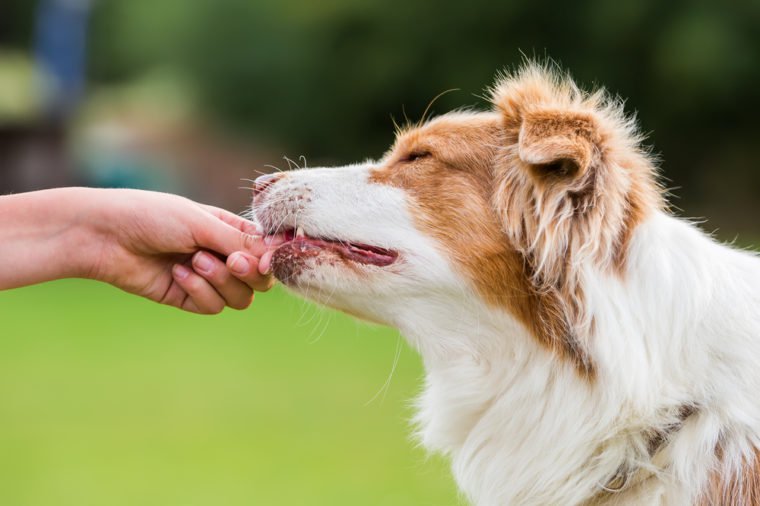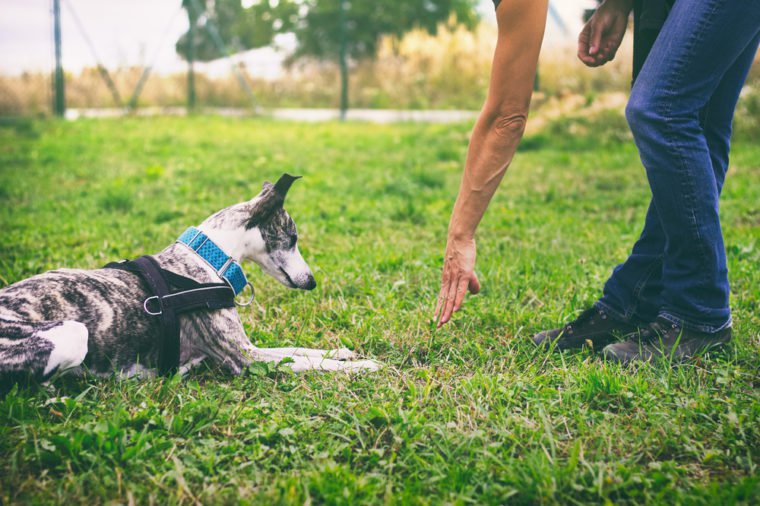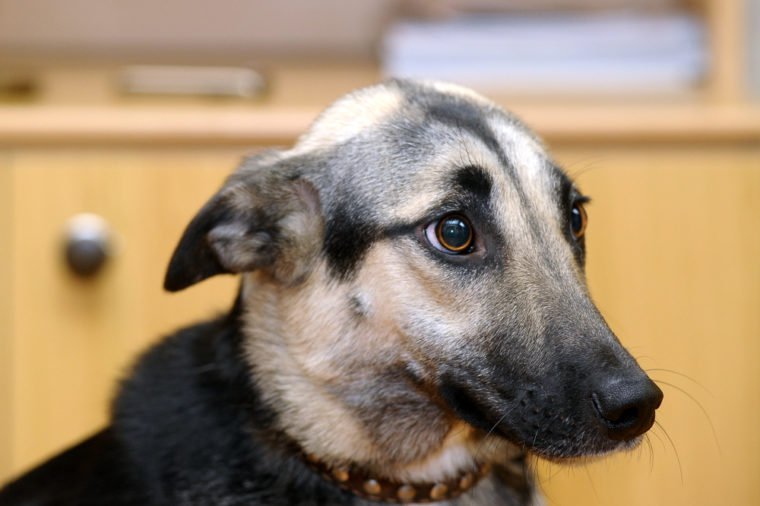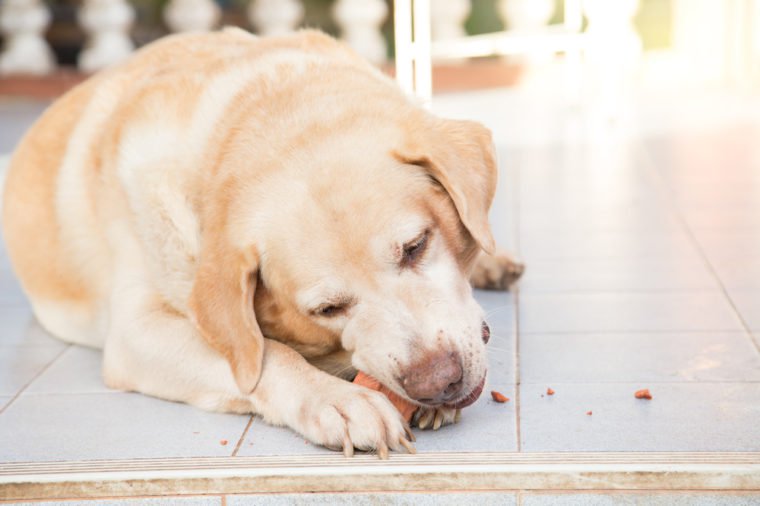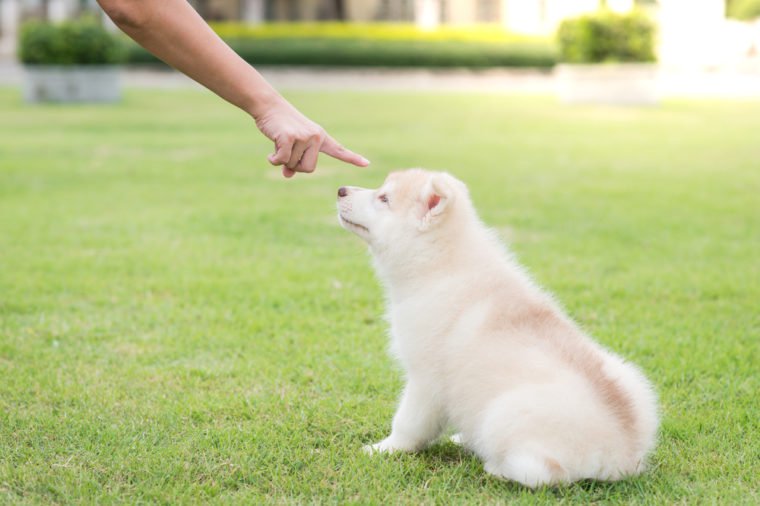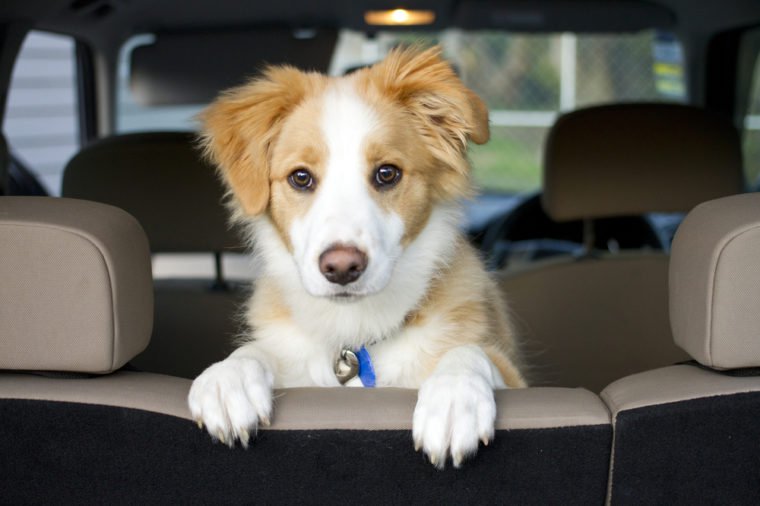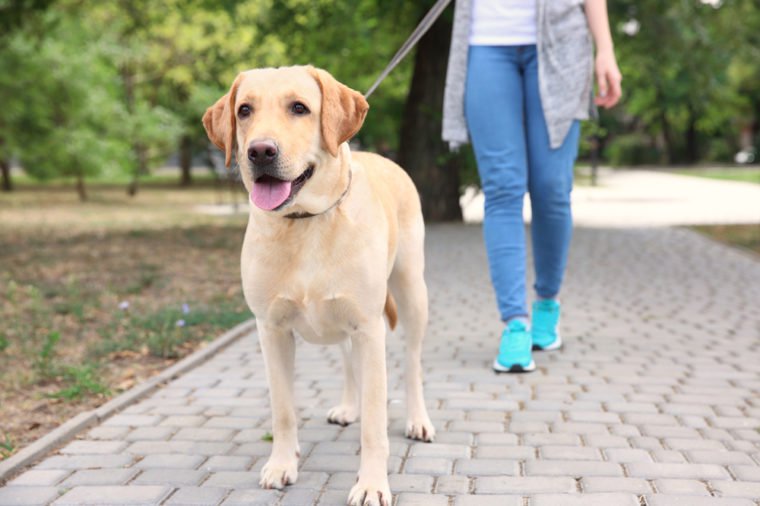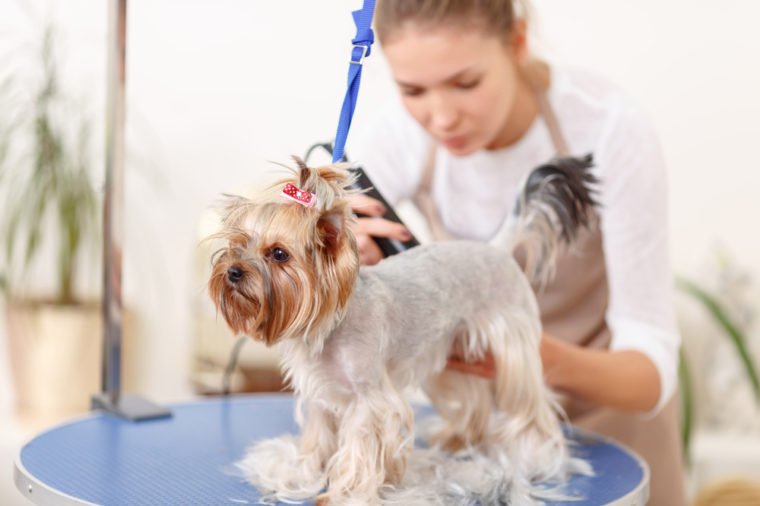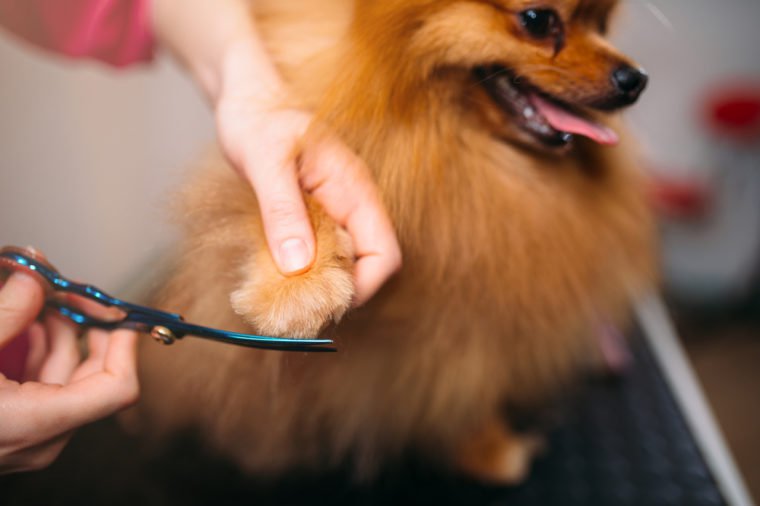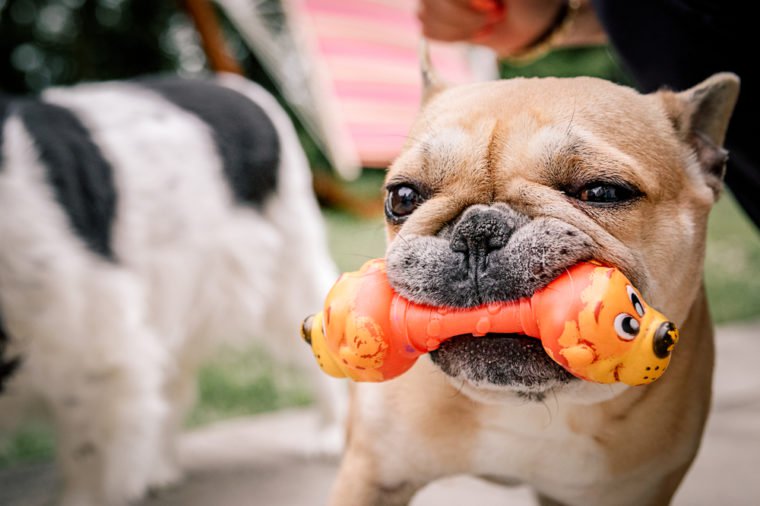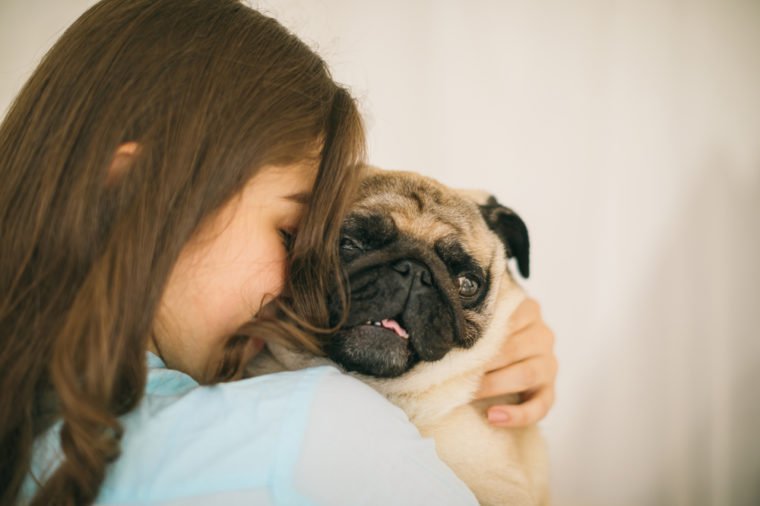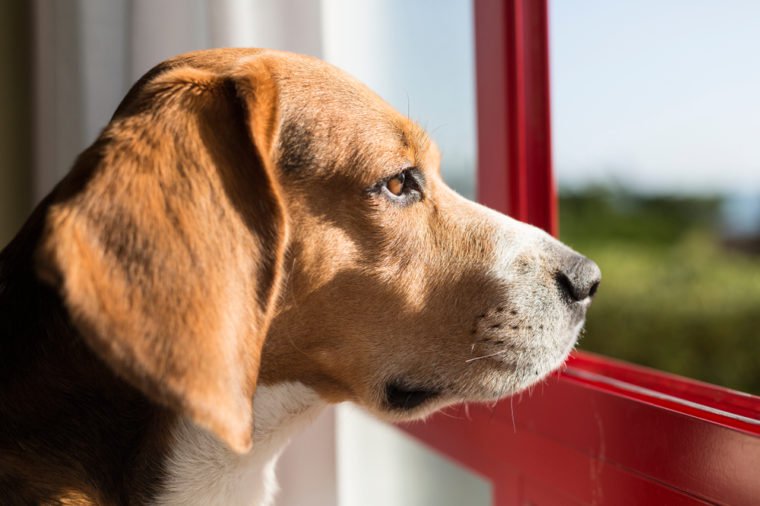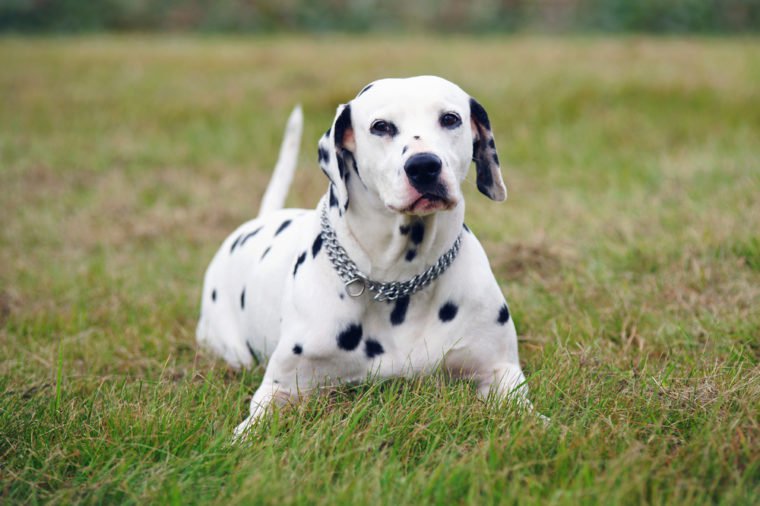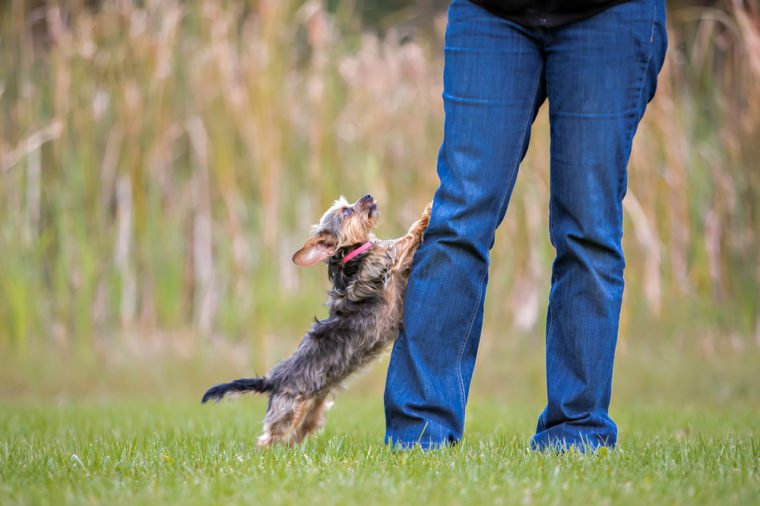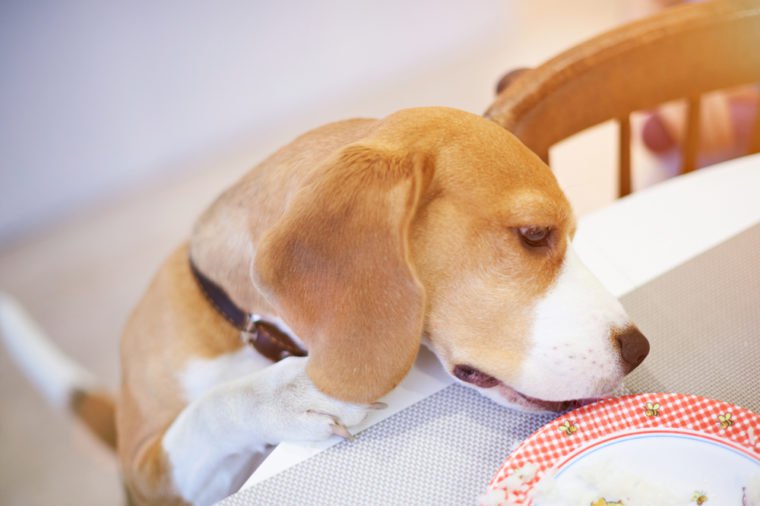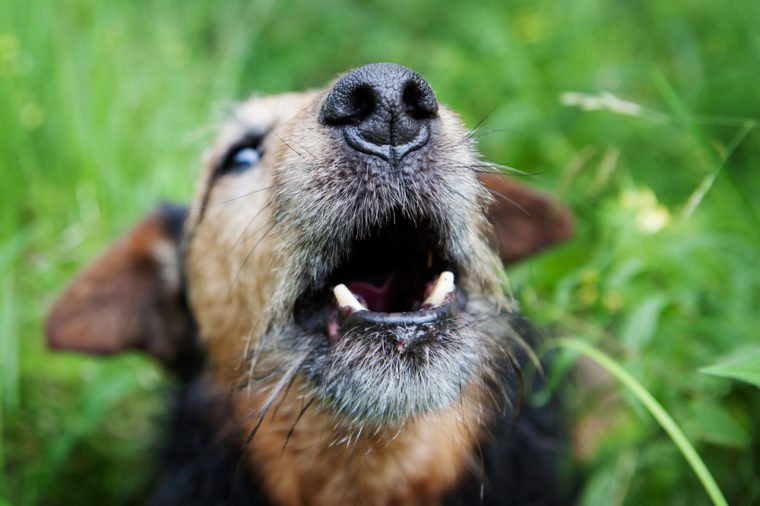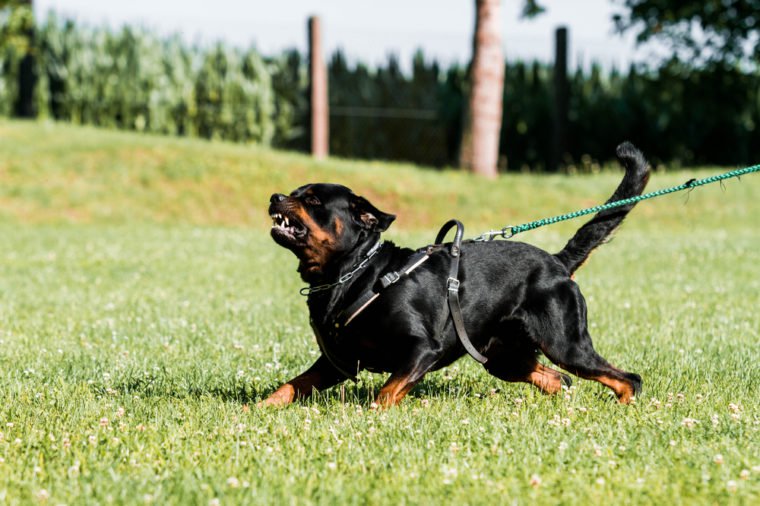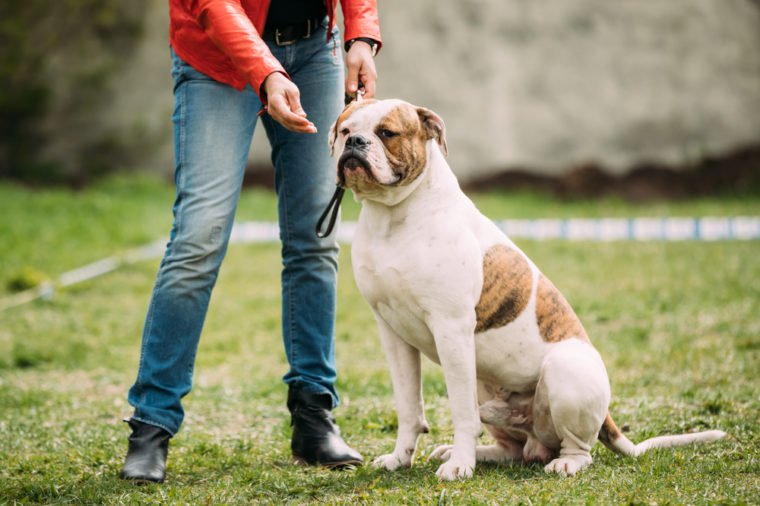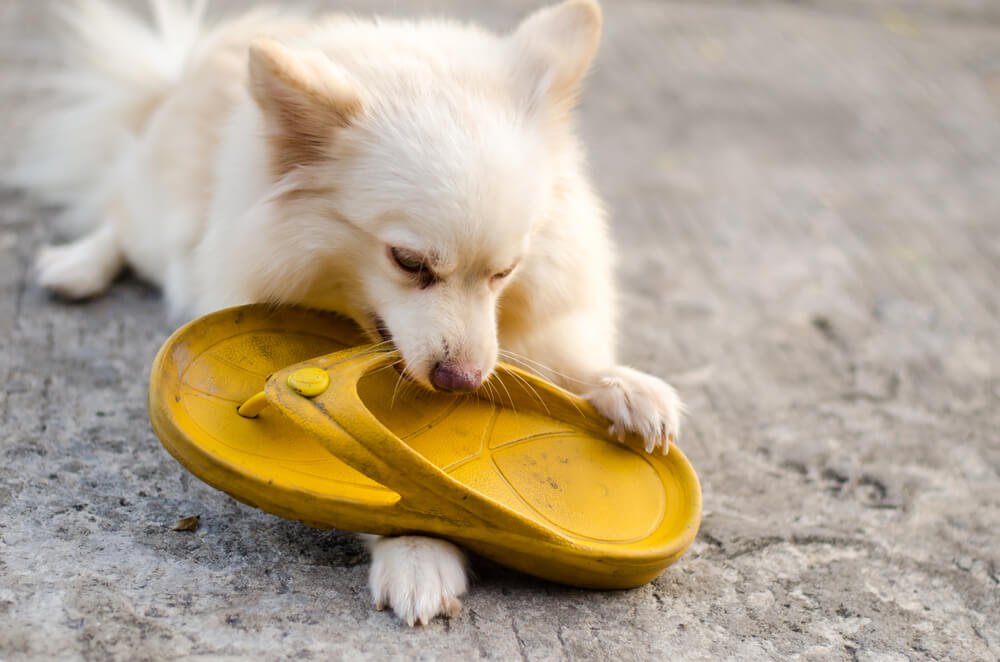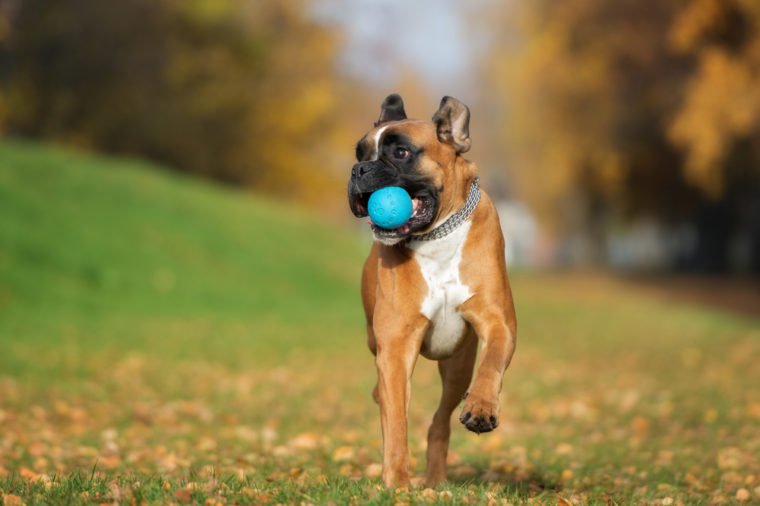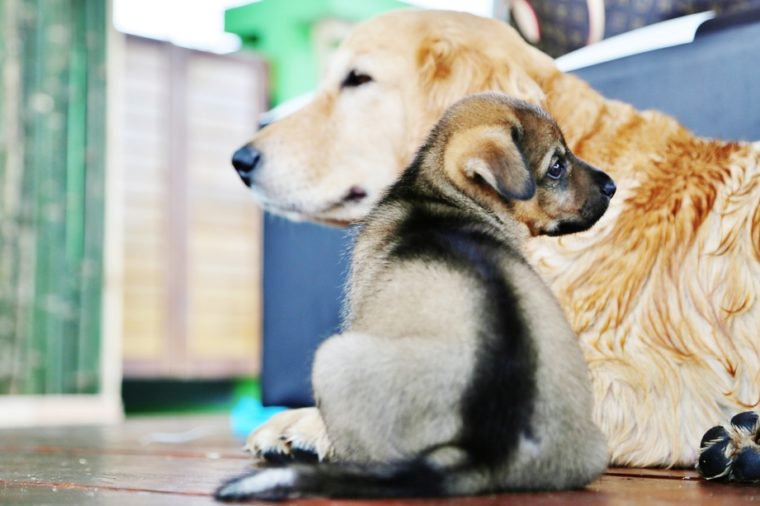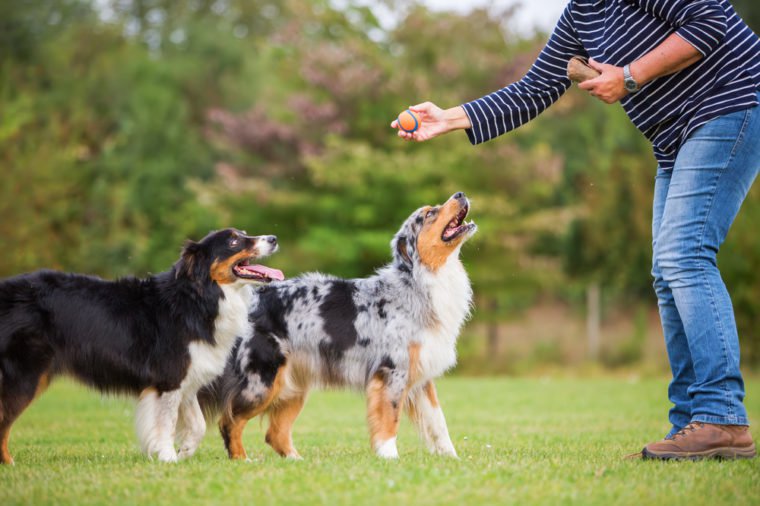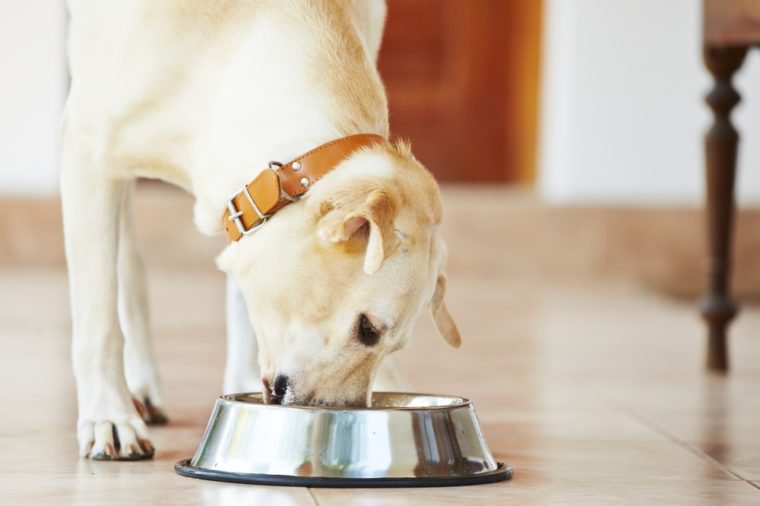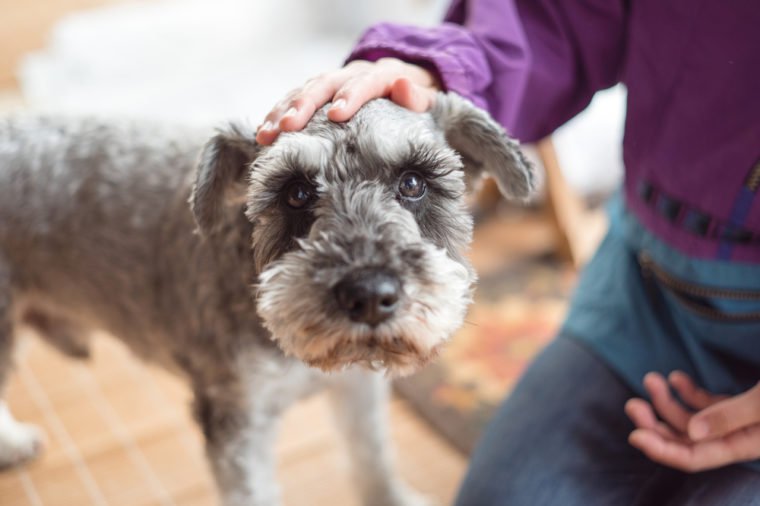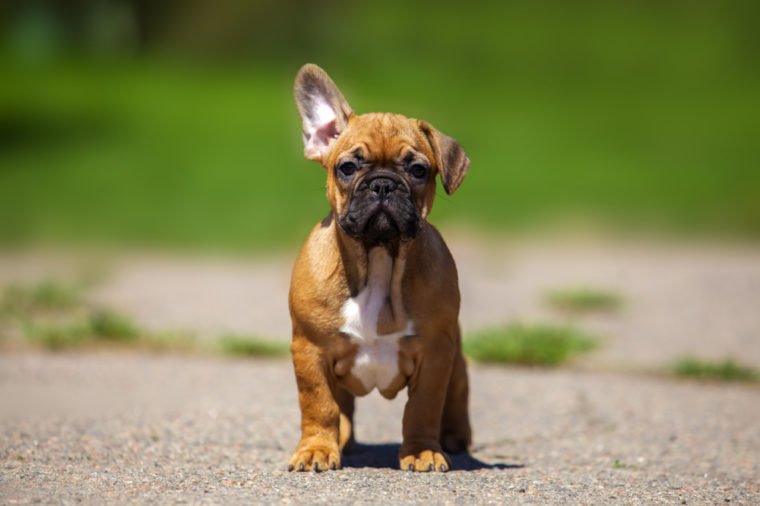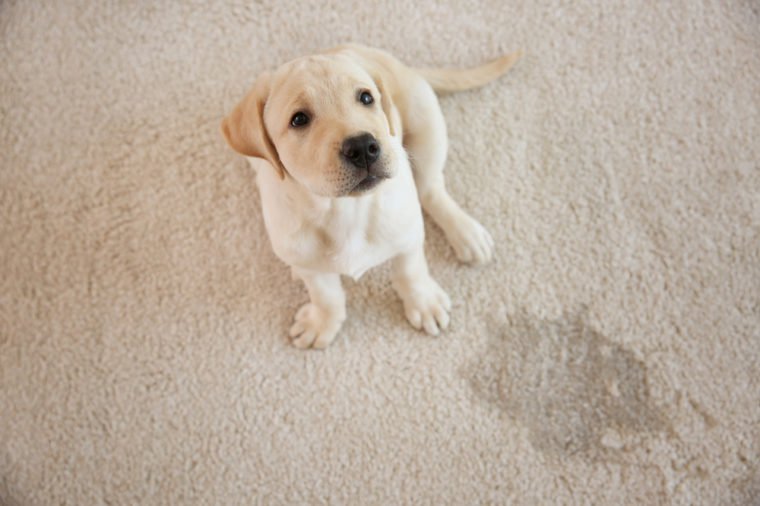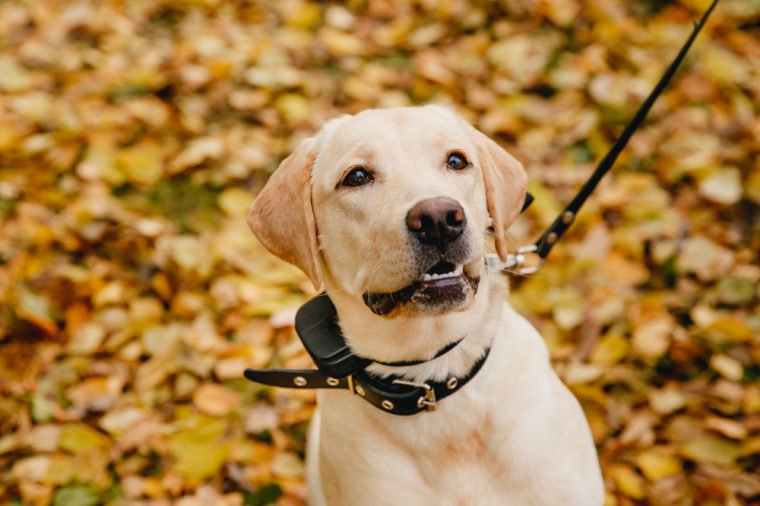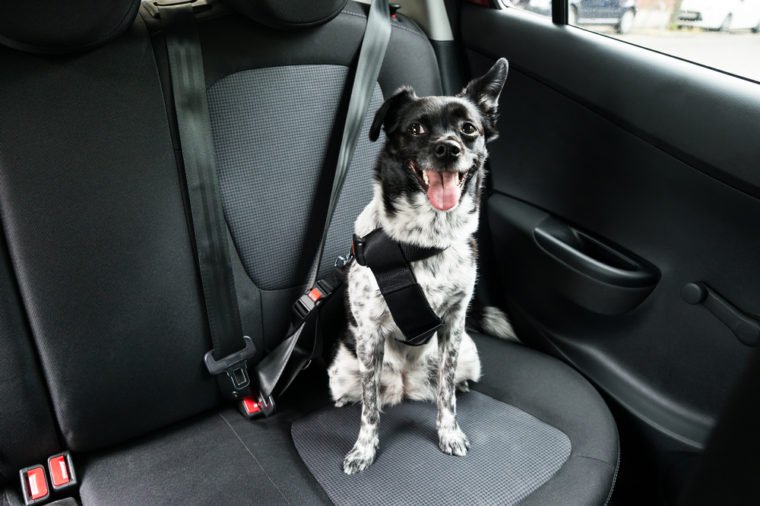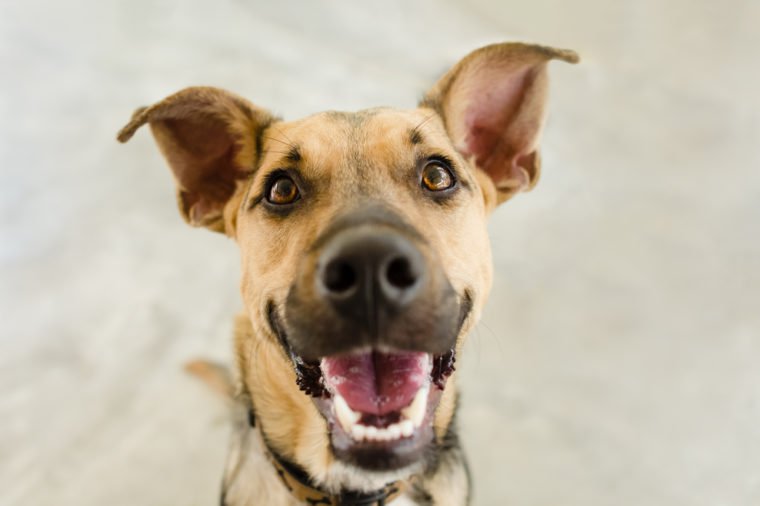Bad human! No!! Stopping rubbing your dog’s nose in their poop! It just confuses them and smears it all over your carpet.
Forgetting to microchip your pup
Priority number one after getting a new dog, whether puppy or rescue, should be making sure they can find their way back home if he or she ever gets lost. Over 10 million pets are lost every year and it happens to even the most responsible dog owners! The best way to protect your pup is to get it microchipped, says Aimee Gilbreath, executive director at the Michelson Found Animals Foundation. These small chips that are implanted in the folds of the skin in your pup’s shoulders hold a unique ID number that connects with your contact info (i.e. your phone number) that you supply online. It’s not a GPS tracker. Many shelters will offer inexpensive microchips or you can ask your vet about microchipping options, she says.
Not registering the microchip
Microchipping your dog is only half the battle—many owners don’t realize you have to also register the microchip with your name and current contact information for it to work. Many registries charge a yearly fee or you can opt for the free microchip registry by Michelson Found Animals, Gilbreath says. Make sure your information is current every year, she adds.
Dropping the leash and telling your dog to “make friends”
Some dogs are immediately comfortable with other animals but many are not, and throwing your dog into a situation with another dog to “make friends” is a recipe for disaster, Gilbreath says. Start by making a careful introduction, looking for signs of distress in both animals. “Never force an interaction and have a place for each dog to go if they feel threatened—you can slowly bring them back together after they’ve had time to calm down,” she explains.
Expecting all your pets to get along perfectly from day one
Introducing a new dog to your existing pets requires planning and patience, Gilbreath says. Make the first introduction on neutral ground (as in, not your home), keep both dogs leashed at first to maintain control, and have plenty of treats on hand to reinforce good behavior, she recommends.
Feeding your dog off your plate
It can be hard to resist Fido’s pleading eyes at the dinner table but letting him eat human food is a risky endeavor, Gilbreath says. “While most fruits and veggies are good for dogs, many aren’t,” she says. “The biggest no-nos are grapes, nuts, onions, and garlic.”
Putting a vase of flowers on a low table
Lilies, chrysanthemums, and tulips are all beautiful blooms but they are also toxic to dogs, Gilbreath says. “Many of nature’s beauties have ugly side effects that range from stomach issues to death,” she says. “You’d think your pup would be smart enough to not eat your floral arrangement but vets see plenty of these cases every year.” Keep your flowers out of reach and make sure you are familiar with this list of plants that are toxic to dogs.
Decorating for the holidays with poinsettias
Every year you see warnings about not allowing your pets near poinsettias. The hype is a little overblown—they won’t kill your pup — but it’s still good advice as the festive red plant contains a sap that may cause irritation to your dog’s mouth and stomach and may cause vomiting, Gilbreath says.
Not properly vetting your dog sitter
Just because someone is a loving pet owner doesn’t mean they’re qualified to be a pet sitter, says Beth Stultz-Hairston, vice president of Pet Sitters International. People see it as an easy way to earn some quick cash but there’s a lot more that goes into taking care of a pet than just feeding and walking them, she says. Not sure what to look for?
Neglecting daily walks
Daily outdoor walks are as good for you as they are for your dog, yet when we get busy they are often one of the first things to go. This is a huge mistake, says Anthony Newman, certified canine behavior consultant, founder of Calm Energy Dog Training NYC. “No matter how smart, eager, and loving your dog is, he’s unlikely to be able to learn or remain well behaved if he hasn’t recently purged his mental, physical, and social energies outside,” he says. Make daily walks a must-do; your dog and your waistline will thank you!
Never letting your pup run off-leash
Yes, walks are great but to be truly happy and healthy, dogs require some off-leash time, Newman says. Ideally, you take them to play in a dog park with other dogs. It’s not as simple as letting go of the leash, however. “This requires training in itself, to do safely and effectively, and not all dogs are capable of peaceful socializing; but most dogs are capable if shown the way, and if you can do it it’s worth the extra work,” he says. Don’t make an embarrassing fur-pas.
Relying too much on treats
“Too many people have the impression that raising a calm, peaceful, social, respectful, patient, obedient dog requires constantly feeding them treats,” Newman says. Giving them too many treats not only takes a toll on their health but can actually backfire when it comes to training, teaching them to respond only to food and nothing else.
Not learning your dog’s love language
Anything your dog enjoys is a reward, Newman says. This includes praise, pets, belly rubs, going on a walk, sniffing, playing with toys, meeting friends, fetching a ball, and so on. Your dog needs those rewards just as much as (or more than) the edible kind, he says.
Not following through on commands
Yelling “come” repeatedly as you chase your dog around the park is only teaching him that he gets attention when he misbehaves, Newman says. “To stop this trend, say commands only when you can make them happen,” he explains. For example, only say “come” when you can crouch and be happy and lure with a treat, or even pull on a long leash. Eventually, your dog will learn to respond to the command alone.
Mistaking ignorance for bad behavior
Did your dog ignore your command to sit because he’s being a butthead or because he doesn’t really know what you mean? Too often poor behavior is simply the result of poor training, Newman says. “Either your dog doesn’t understand the command, or he does and you have to take each possibility in turn,” he says. Start by making sure he’s trained well to understand what each command means before assuming he’s being naughty.
Asking a friend to watch your dog for the weekend
“Unexpected health conditions and accidents can occur at any time—from dog bloat to chewed-up furniture to pet escapes—and while a friend or family member may love your pets, they likely do not have the expertise (or the funds) to handle such situations if they occur,” Stultz-Hairston says. To avoid a potential tragedy, hire a professional dog sitter or at the very least make sure your friend or family member is briefed on how to handle emergency situations.
Laughing when your dog sneaks onto the couch
Many dog owners create a monster by inadvertently reinforcing bad behaviors, says jme Thomas, executive director of Motley Zoo Animal Rescue. For example, when you pet a dog who is growling or acting out, you probably think you’re telling them “It’s OK, I’m here” but what they are learning is that they get attention for being bad, Thomas explains. Positive reinforcement works much better.
Lecturing your dog
Yelling at your dog when she spreads the garbage all over the floor may make you feel better, but it won’t help your dog learn not to do it again, Thomas says. “Discipline is not about berating them to make a point; dogs need black and white, small, simple cues that say ‘I like that’ or ‘I don’t like that,” Thomas explains. Once you’ve established those cues, it’s very important to always be consistent using them.
Using food as love
“We have seen so many owners create health problems in their dogs—sometimes to the point of crippling pain or disease—because of over-feeding them,” Thomas says. There are so many ways to show your dog you love him that don’t involve food. In fact, making sure your dog stays a healthy weight is a great way to show how much you care.
Treating the leash as a torture device
Leash-training is an essential skill for all dogs to learn. Not teaching your dog to do well on a leash is like not teaching your child to read, Thomas says. Unfortunately, many owners see the leash as a bad thing and use it inappropriately, including letting their dogs off-leash at inappropriate times. “Leash training is a gift you give your dog, not a punishment,” Thomas adds.
Overestimating your dog’s intelligence
“Your dog is the equivalent of a human three-year-old,” Thomas says. This means they have a limited vocabulary, a basic understanding of social cues, and some self-control. So even if your dog can open door knobs or jump rope, they still need to be protected. “Rather than thinking your dog is ‘so smart’ because she follows you so diligently, recognize [that by putting her in situations she can’t handle] all you are doing is endangering your beloved dog for your own selfish needs and desires,” Thomas adds.
Using harsh cleaning products
Most of the commonly used cleaning products in our homes are toxic, so even though you’re trying to help your dog by keeping his space clean, you may be doing harm, says Gary Richter, DVM, and member of Rover.com’s Dog People Panel. Even if they are not directly exposed to these products, they may walk over a floor that has been mopped and then lick their feet and be exposed to toxins. Check the label: Any product with bleach and ammonia are hazardous to animals. Instead, he suggests scrubbing with things like baking soda or salt that leave no toxic residue.
Spoiling your pup with homemade treats
Too many treats of any kind can cause health problems but homemade treats, in particular, are often not nutritionally balanced, Dr. Richter says. A few here and there are totally fine (as long as all your ingredients are safe for dogs!) but they should be a very small percentage of the overall diet, he says.
Saying “stop it” when you really mean “down”
“Dogs don’t understand synonyms so yelling ‘hey’ ‘cut it out’ or ‘quit’ when you mean ‘stop’ won’t work,” says Brett Podolsky, co-founder of The Farmer’s Dog. Dogs need consistency to learn, so teach your dog one word and only one word for each command and stick with it, he says.
Consoling your dog when they whimper
If your dog gets a little scared and starts to whimper, your instinct is to comfort them with snuggles, pets, and soothing words. But dogs aren’t human beings, and they simply don’t understand consolation, Podolsky says. “By giving them extra attention in those moments, you’re actually just giving them feedback that being scared is a good thing,” he says.
Subbing dental snacks for a real tooth-brushing
Blame clever marketing, but there’s a widespread misconception that kibble or “dental snacks” will keep dogs’ teeth clean and remove plaque. Don’t believe the hype, Podolsky says. “You would never use cereal to clean your own teeth. There’s only one way to keep your dog’s teeth clean: brushing them,” he says.
Waiting to punish your dog
To be effective, a punishment for bad behavior needs to come immediately after the behavior. Showing anger after the fact will only confuse them, Podolsky says. So when you come home to find pee on the carpet, punishing your dog then won’t help since they likely made the mess hours earlier and won’t connect the two.
Leaving your pup in a hot car for “just a minute”
Every year, dogs suffer and die when their guardians make the mistake of leaving them in a parked car—even for “just a minute”—while they run an errand. “Parked cars are deathtraps for dogs: On a 78-degree day, the temperature inside a parked car can soar to 120 degrees in just minutes,” says Ben Williamson, senior international media director for People for the Ethical Treatment of Animals. “Dogs can sustain brain damage or even die from heatstroke in just 15 minutes.” Just don’t leave your dog in a car.
Taking your dog for a walk on a hot summer day
Humans wear shoes so you may not realize just how hot a sidewalk or road can get, says. When the air temperature is 86 degrees, the asphalt can reach a sizzling 135 degrees—hot enough to cause burns, permanent damage, and scarring to sensitive foot pads after just one minute of contact, Williamson says. Always test the pavement with your hand before setting out, walk early in the morning or late at night when it’s cooler, carry water, and take frequent breaks in shady spots and never make dogs wear muzzles that restrict their breathing, he advises.
Dropping off your dog at the groomers
Incidents in which dogs are seriously injured or even killed at grooming salons are alarmingly common, Williamson says. They can suffer cuts, burns, or even heat exhaustion. “The best way to prevent accidents is by using a groomer who makes house calls so that both your animal companion and the groomer are under your supervision,” he says. “If that’s not possible, ask to be present during the grooming.”
Relying solely on your groomer to take care of your dog’s hygiene
Even if your dog sees the groomer on the regular, chances are she still needs some care in between visits. Instead of seeing this as a chore, look at it as a chance to bond, Williamson says. “Regular bathing, brushing, and clipping will help you build a rapport and trust with your animal companion while keeping her looking and feeling healthy,” he says.
Giving your pooch a toy to distract them from chewing your shoes
Finding your dog gnawing on one of your expensive leather shoes or brand new ottoman is one of the most irritating parts of dog ownership, so it’s understandable that you want to put a stop to the damage immediately. Unfortunately, many people’s instinct is to give the dog something else to chew on, like a bone or toy. This rewards their bad behavior with a treat, making it more likely to happen again, Williamson says. Instead, give them new chew toys when they are sitting quietly or playing well.
Forgetting to put your dog in your will
What will happen to your beloved pet when you die? It’s not fun, but you need to think about it. “Our dogs are an integral part of our lives, and we know that they depend on us completely,” Williamson says. “So it is crucial to make careful preparations now for their future care by selecting a guardian and including that information in your estate planning.” Make sure to talk to your loved ones about your plans so there won’t be any surprises.
Not putting an emergency animal sticker in your front window
One of the best things you can do for your pet is to put a “Please save our animals” sticker in a location that is visible from the outside your house, in case of a fire or other emergency, Williamson says. This alerts first responders to be on the lookout for your pets and may help them get to safety.
Using choke and prong collars
Choke and prong collars are designed to punish dogs for pulling on their leash by inflicting pain and discomfort. They can cause serious physical and emotional damage to dogs and should never be used, Williamson says. The most humane and safest option for walking a dog who tends to want to pull is a front-leash attachment harness, such as the Sense-ation, which redirects the animal back to the human when they pull, he adds.
Walking through foxtails
Foxtails are a spiky plant common in the western parts of the United States. They can injure or even kill dogs as they carry barbs that can lodge themselves deep in your dog’s skin, feet, nose, mouth, ears, eyes, or genitals, Williamson says. If you find a foxtail in an animal’s fur, you can carefully remove it with tweezers, but if it’s in any way lodged in the skin or you suspect that it has entered the animal’s body, get to a veterinarian immediately.
Selectively enforcing the rules
If you let your dog jump up on you when you get home but then yell at them when they jump up on you again later, you’re going to end up with a seriously confused dog who will likely jump up at inappropriate times, says Kayla Fratt, a dog behavior specialist and trainer at Journey Dog Training. “Being inconsistent with rules, then getting upset about it is a common mistake rookie owners make,” Always be consistent.
Being unwilling to change your behavior
Training a dog is just as much about training the human as it is the animal, Fratt says. For example, refusing to get baby locks for cabinets or put dirty dishes away allows your dog to learn to steal food and garbage, which is a much harder habit to break than just teaching your dog that scavenging isn’t an option by preventing it.
Assuming your dog knows right from wrong
“Dogs don’t know the rules of human society, all they know is what you teach them,” Fratt says. So calling a dog “bad” or getting mad at them for “being a jerk” makes no sense and won’t help you get the behavior changes you’d like.
Yelling at your dog to stop barking
Yelling “No, BAD! No bark!” doesn’t mean a darn thing to your dog, Fratt says. “The dog might stop barking because he’s startled or interested in your voice but the dog does not know what he’s being told to do,” she explains. It may even have the opposite effect: Some dogs, when they hear their owners yelling, decide they want to join in the fun and only get louder.
Excusing your dog’s growling as a show of dominance
It’s time to forget that whole “dominant/submissive” thing we’ve all been told about dog behavior, Fratt says. “Dominance as a construct has been pretty well debunked—even the guy who originally put forward dominance theory for dog training has gone back on the theory,” she says.
Giving up on training too soon
Training your dog takes a lot of time and patience and there are no shortcuts. “I see this a lot, someone saying, ‘She still pulls on the leash!’ when they’ve let the dog pull on the leash for three years and then tried two weeks of training before giving up,” Fratt says. Your dog will learn if you’re consistent and patient.
Thinking your dog is getting revenge by chewing up your shoes
Many owners think that their dog is being vengeful when he pees on the carpet, chews the furniture, or does something else naughty while they are gone. Usually, it is the opposite that is true, Fratt says. “These ‘bad’ behaviors are especially common for dogs with separation anxiety,” she explains. “They’re not misbehaving because they’re mad at you, it’s because they’re panicking.”
Assuming your boxer will act the same as the boxer you had as a kid
No two dogs are alike, even if they’re the same breed, Fratt says. While some breeds have general shared characteristics, it’s important to recognize each dog has her own temperament, needs, fears, likes, and dislikes. The important thing is to get to know your dog, not the dog you expect them to be.
Comparing a puppy to an older dog
Memory is a funny thing and dog owners tend to forget that their calm, gentle 14-year-old dog used to be an excitable pup, Fratt says. This leads to people saying things like, “Well, my dog never did that…” or “If you would just do what I do…” This is unfair to the younger dog and puts unrealistic expectations on their behavior.
Thinking your dog can’t be trained
Some dogs are harder to train than others but all dogs will respond to the right training, Fratt says. “I’ve had clients say that their dog isn’t a people-pleaser, so he’s untrainable,” she says. “Not true!” For tips on how to train a dog that doesn’t seem to care about pleasing their master, check out her blog post on the subject.
Teaching your dog to bark for food
Dogs get very excited for their food (it’s part of what makes them so endearing!) and one of the ways they may manifest this is by barking or yipping. You may think they’re “talking” to you or that you’re quieting them up by giving them what they want but you’re really just creating a bad habit where they expect to get rewarded with food when they bark—a habit that can turn into non-stop barking in the future, says Amy Reed, an expert in pet care services at Woofie’s Pet Sitting, Dog Walking & Mobile Pet Spa.
Allowing your small child to walk the dog
“Dogs are powerful animals and a child can be easily hurt if the dog pulls too hard on his leash,” Reed says. An adult or child over 16 should always be present when walking a dog.
Letting your dog “say hello” to visitors
Owners think their dogs are innocently excited when they jump on and run around strangers, however, this can quickly go bad if the dog nips or the person is afraid of dogs. “Dogs can feel anxiety in people, this could be disastrous if the stranger tries to protect herself and the dog thinks it is being attacked,” Reed says.
Taking your new puppy to the dog park
Socializing your dog is very important to help them get used to being around other animals and humans but it’s a skill for older dogs, Reed says. “Taking a puppy between 6 to 16 weeks old to the dog park is dangerous,” she says. “The new puppy will not be fully vaccinated and can catch fatal diseases.”
Rubbing your dog’s nose in their poop when they have an accident
It used to be standard practice during house training to hit your dog’s nose or rub it in their urine or feces when they have an accident, but not only is this advice seriously outdated, it’s also ineffective, says Russell Hartstein, CDBC, CPDT-KA, dog behavior expert and CEO of CEO Fun Paw Care. Dogs don’t understand the connection and it may make them anxious, which can make them more likely to have another accident.
Using shock or “bark” collars
Getting your dog to stop yapping at the push of a button may sound ideal, but shock collars and other similar devices are cruel and ineffective, Hartstein says. “Using this type of punishment on a dog does tremendous emotional and physical damage to them and can even kill them,” he explains. Plus, dogs can get used to pain so it will stop working after awhile, anyhow.
Not using a seat belt for your dog
You wouldn’t let your kid ride without a seat belt would you? Same goes for your pup! “A dog can easily become a distraction, which is a huge safety hazard,” says Kurt Venator, the chief veterinary officer at Purina. “Not to mention, if an accident occurred, your pup could turn into a projectile with the potential to cause injury or even death to anyone in the vehicle including himself or herself,” he says. Be sure to harness your dog with a crash-tested safety harness every time you go for a ride.
Not giving your dog their own space
Dogs are definitely human’s best friend but sometimes your dog needs a safe space to rest and relax on their own. Designate a bed, crate or appropriate area in the home that your dog can go to get away for a bit, Dr. Venator says. And be sure to let everyone in the family know not to bother your dog when he or she is in their safe space unless necessary.


